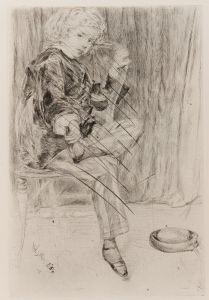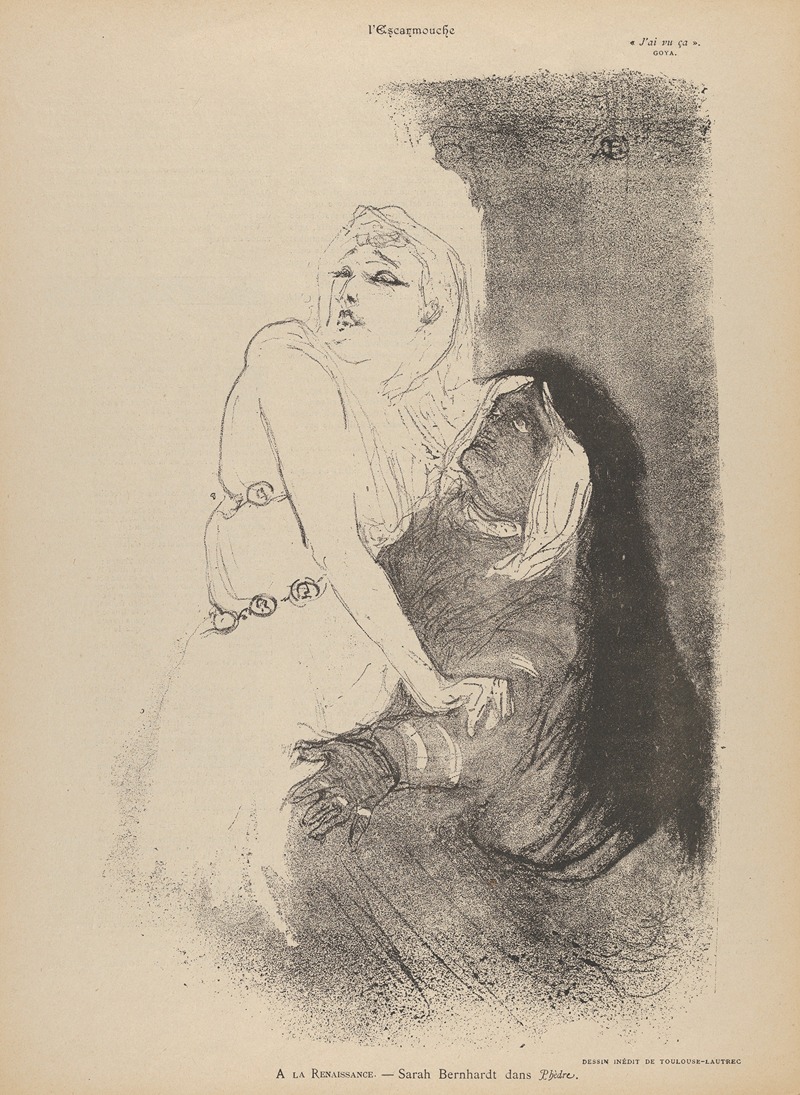
At the Théâtre de la Renaissance; Sarah Bernhardt in Phèdre
A hand-painted replica of Henri de Toulouse-Lautrec’s masterpiece At the Théâtre de la Renaissance; Sarah Bernhardt in Phèdre, meticulously crafted by professional artists to capture the true essence of the original. Each piece is created with museum-quality canvas and rare mineral pigments, carefully painted by experienced artists with delicate brushstrokes and rich, layered colors to perfectly recreate the texture of the original artwork. Unlike machine-printed reproductions, this hand-painted version brings the painting to life, infused with the artist’s emotions and skill in every stroke. Whether for personal collection or home decoration, it instantly elevates the artistic atmosphere of any space.
Henri de Toulouse-Lautrec's painting At the Théâtre de la Renaissance; Sarah Bernhardt in Phèdre is a work that captures the iconic French actress Sarah Bernhardt in her role as Phèdre, the titular character in Jean Racine's 17th-century tragedy Phèdre. This painting is one of many by Toulouse-Lautrec that reflects his fascination with the performing arts and his ability to depict the theatrical world with vividness and intimacy.
Sarah Bernhardt (1844–1923) was one of the most celebrated actresses of her time, often referred to as "The Divine Sarah." Her portrayal of Phèdre, a character from Greek mythology who is consumed by forbidden love and tragic fate, was highly acclaimed and remains one of her most famous roles. The Théâtre de la Renaissance in Paris, where this performance took place, was a prominent venue for theatrical productions during the late 19th century.
Henri de Toulouse-Lautrec (1864–1901) was a French painter, printmaker, and illustrator known for his depictions of Parisian nightlife, particularly the world of cabarets, theaters, and performers. His works often focused on capturing the essence of his subjects, blending realism with a unique, expressive style. Toulouse-Lautrec had a deep appreciation for the performing arts, and his portraits of actors, singers, and dancers are celebrated for their ability to convey the personality and charisma of his subjects.
In this painting, Toulouse-Lautrec portrays Sarah Bernhardt in costume as Phèdre, emphasizing her dramatic presence and the emotional intensity of her performance. The artist's use of bold lines and a limited color palette draws attention to Bernhardt's striking features and theatrical expression. The composition reflects Toulouse-Lautrec's skill in capturing the atmosphere of the theater and the magnetic allure of its performers.
The exact date of the painting is not definitively documented, but it is believed to have been created during the late 19th century, a period when both Toulouse-Lautrec and Sarah Bernhardt were at the height of their careers. The work is significant not only as a portrait of one of the era's most famous actresses but also as an example of Toulouse-Lautrec's ability to merge fine art with the vibrant culture of the Parisian stage.
This painting is part of Toulouse-Lautrec's broader body of work that celebrates the world of performance and entertainment. It serves as a testament to the enduring legacy of Sarah Bernhardt as a theatrical icon and to Toulouse-Lautrec's role as a chronicler of the cultural life of his time.






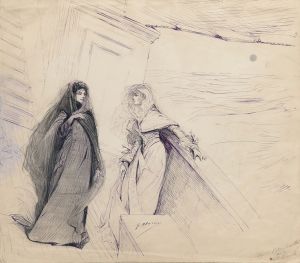



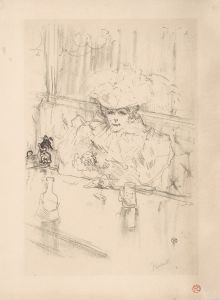
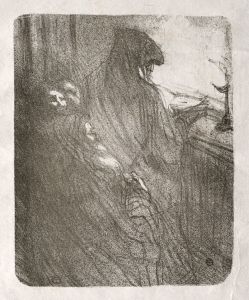



![Designs for theater with black-framed proscenium and boldly colored settings.] [Study for stage light wall decoration, possibly for Caf ̌Crillon](/imgs/249423/s/winold-reiss-designs-for-theater-with-blackframed-proscenium-and-boldly-colored-settings-study-for-stage-light-wall-decoration-possibly-for-caf-crillon-5f9976e0.jpg)
